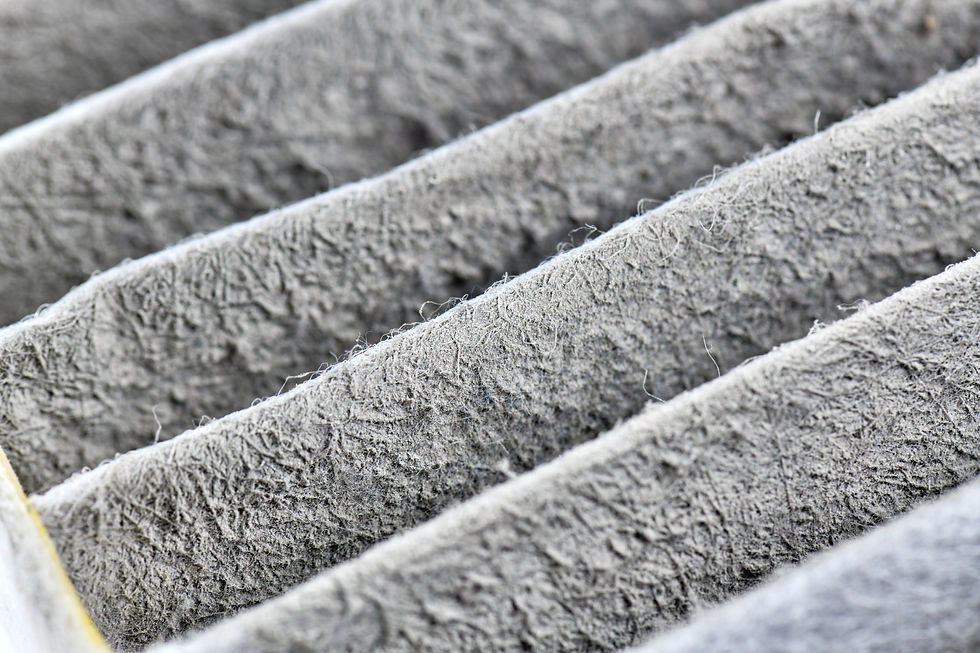Exploring the Differences Between Mechanical and Natural Ventilation
- Jennifer Crowley
- Jul 31, 2023
- 3 min read
Updated: Jul 9, 2024

Mechanical and Natural ventilation are two different methods for introducing fresh air into a building or space. Both have their own benefits and drawbacks, and the appropriate choice will depend on the specific needs of the space being ventilated.
Mechanical ventilation involves using mechanical means, such as fans and ductwork, to bring fresh air into a space. This type of ventilation is often used in buildings with no windows or spaces where natural ventilation is insufficient. One advantage of mechanical ventilation is that it can be precisely controlled, allowing for precise regulation of temperature, humidity, and air quality. It is also a good option for spaces that need to be kept at a specific temperature or humidity level, such as hospitals or laboratories.
However, mechanical ventilation can be expensive to install and maintain and requires a reliable power source. It can also be noisy, which may be a concern in certain settings.
On the other hand, natural ventilation relies on the movement of air through open windows, doors, or vents to bring fresh air into a space. This type of ventilation is often used in residential buildings and other spaces where windows and doors can be opened to allow air circulation. One advantage of natural ventilation is that it is generally less expensive to install and maintain than mechanical ventilation. It is also typically quieter than mechanical ventilation, as it does not involve mechanical fans or other equipment.
However, natural ventilation is less precise than mechanical ventilation and may not be suitable for spaces that require a specific temperature or humidity level. It is also not ideal for areas that do not have windows or other openings that can be used to bring in fresh air.
Natural ventilation and mechanical ventilation are both methods of controlling the airflow within a building, but they have some key differences in terms of their benefits and drawbacks.
Pros of natural ventilation:
Energy efficient: Natural ventilation systems do not require the use of mechanical equipment, which means they consume less energy and have a lower environmental impact.
Cost-effective: Natural ventilation systems typically have lower upfront costs than mechanical systems and may also have lower maintenance costs over time.
Improved indoor air quality: Natural ventilation helps remove stale indoor air and bring in fresh outdoor air, improving the overall air quality within a building.
Cons of natural ventilation:
Dependent on the weather: The effectiveness of natural ventilation systems can be affected by the weather and may not function as well during periods of high heat, humidity, or low winds.
Limited control: It can be challenging to control and regulate airflow in a natural ventilation system, which can result in uneven temperature and air quality in different parts of a building.
Site and architecture-specific: Natural ventilation might not be suitable for all buildings, especially in urban or high-rise areas or extreme weather conditions, as a well-designed natural ventilation system must be integrated into the architecture and design of the building.
Pros of mechanical ventilation:
Climate independence: Mechanical ventilation systems can operate regardless of weather conditions and provide consistent airflow and temperature control.
Greater control: Mechanical systems can be designed and controlled to provide a specific level of airflow, temperature and humidity, allowing for better indoor environmental quality control.
Suitable for any building type: Mechanical systems can be installed in any building and can be designed to suit the specific needs of the building.
Cons of mechanical ventilation:
Higher energy consumption: Mechanical systems consume energy to power the mechanical equipment needed to circulate air, making them less energy efficient than natural ventilation systems.
Higher upfront costs: Mechanical ventilation systems tend to have higher upfront costs than natural systems and more regular maintenance costs.
In practice, most buildings utilize a combination of both natural and mechanical ventilation systems to balance the pros and cons and achieve optimal Indoor Air Quality (IAQ) and thermal comfort.
In summary, both mechanical ventilation and natural ventilation have their own advantages and drawbacks, and the appropriate choice will depend on the specific needs of the space being ventilated. Mechanical ventilation is generally more precise and can be used to maintain specific temperature and humidity levels, but it is more expensive and requires a reliable power source. Natural ventilation is generally less expensive and quieter, but it is less precise and may not be suitable for certain spaces.




















